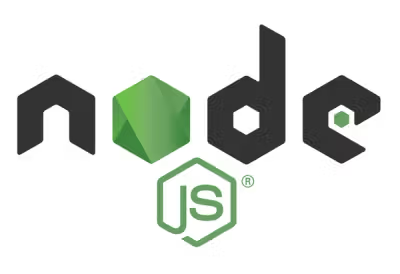What is react-visibility-sensor?
The react-visibility-sensor package is a React component that allows you to detect when a component is visible on the screen. This can be useful for lazy loading images, triggering animations, or tracking user interactions.
What are react-visibility-sensor's main functionalities?
Basic Visibility Detection
This feature allows you to detect when a component becomes visible or hidden. The `onChange` callback is triggered with a boolean value indicating the visibility state.
```jsx
import React from 'react';
import VisibilitySensor from 'react-visibility-sensor';
class MyComponent extends React.Component {
onChange = (isVisible) => {
console.log('Element is now %s', isVisible ? 'visible' : 'hidden');
};
render() {
return (
<VisibilitySensor onChange={this.onChange}>
<div>
This is my content
</div>
</VisibilitySensor>
);
}
}
export default MyComponent;
```
Partial Visibility Detection
This feature allows you to detect partial visibility of a component. By setting the `partialVisibility` prop, the `onChange` callback will be triggered even if only part of the component is visible.
```jsx
import React from 'react';
import VisibilitySensor from 'react-visibility-sensor';
class MyComponent extends React.Component {
onChange = (isVisible) => {
console.log('Element is now %s', isVisible ? 'visible' : 'hidden');
};
render() {
return (
<VisibilitySensor onChange={this.onChange} partialVisibility>
<div>
This is my content
</div>
</VisibilitySensor>
);
}
}
export default MyComponent;
```
Delayed Visibility Detection
This feature allows you to add a delay before the visibility change is detected. By setting the `delay` prop, the `onChange` callback will be triggered after the specified delay in milliseconds.
```jsx
import React from 'react';
import VisibilitySensor from 'react-visibility-sensor';
class MyComponent extends React.Component {
onChange = (isVisible) => {
console.log('Element is now %s', isVisible ? 'visible' : 'hidden');
};
render() {
return (
<VisibilitySensor onChange={this.onChange} delay={500}>
<div>
This is my content
</div>
</VisibilitySensor>
);
}
}
export default MyComponent;
```
Other packages similar to react-visibility-sensor
react-intersection-observer
The react-intersection-observer package provides a React implementation of the Intersection Observer API, which allows you to observe changes in the intersection of a target element with an ancestor element or with a top-level document's viewport. It is more flexible and performant compared to react-visibility-sensor, especially for complex visibility detection scenarios.
react-waypoint
The react-waypoint package allows you to execute a function whenever you scroll to an element. It is useful for triggering animations or loading content as the user scrolls. Compared to react-visibility-sensor, react-waypoint is more focused on scroll-based triggers and offers more control over when the callbacks are fired.
React Visibility Sensor

Sensor component for React that notifies you when it goes in or out of the window viewport.
Install
npm install react-visibility-sensor
Including the script directly
Useful if you want to use with bower, or in a plain old <script> tag.
In this case, make sure that React and ReactDOM are already loaded and globally accessible.
Take a look at the umd example to see this in action
Example
View the example
To run the example locally:
npm run build-example- open
example/index.html in a browser
General usage goes something like:
function render () {
var VisibilitySensor = require('react-visibility-sensor');
var onChange = function (isVisible) {
console.log('Element is now %s', isVisible ? 'visible' : 'hidden');
};
return (
<VisibilitySensor onChange={onChange} />
);
}
Props
onChange: callback for whenever the element changes from being within the window viewport or not. Function is called with 1 argument (isVisible: boolean)active: (default true) boolean flag for enabling / disabling the sensor. When active !== true the sensor will not fire the onChange callback.partialVisibility: (default false) consider element visible if only part of it is visible. Also possible values are - 'top', 'right', 'bottom', 'left' - in case it's needed to detect when one of these become visible explicitly.minTopValue: (default 0) consider element visible if only part of it is visible and a minimum amount of pixels could be set, so if at least 100px are in viewport, we mark element as visible.intervalCheck: (default true) the default usage of Visibility Sensor is to trigger a check on user scrolling, by checking this as true, it gives you the possibility to check if the element is in view even if it wasn't because of a user scrollintervalDelay: (default 1500) integer, number of milliseconds between checking the element's position in relation the the window viewport. Making this number too low will have a negative impact on performance.scrollCheck: (default: false) by making this true, the scroll listener is enabled.scrollDelay: (default: 250) is the debounce rate at which the check is triggered. Ex: 250ms after the user stopped scrolling.containment: (optional) element to use as a viewport when checking visibility. Default behaviour is to use the browser window as viewport.delayedCall: (default false) if is set to true, wont execute on page load ( prevents react apps triggering elements as visible before styles are loaded )
It's possible to use both intervalCheck and scrollCheck together. This means you can detect most visibility changes quickly with scrollCheck, and an intervalCheck with a higher intervalDelay will act as a fallback for other visibility events, such as resize of a container.
Thanks
Special thanks to contributors:
License
MIT




